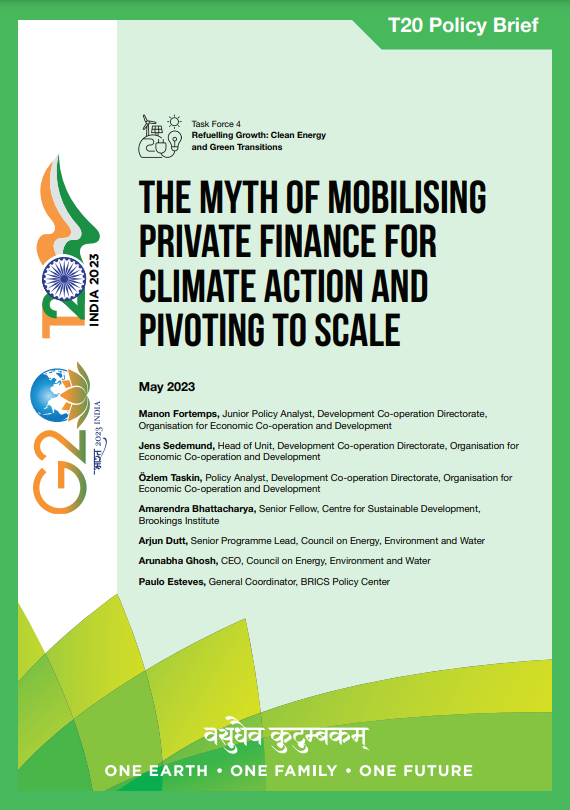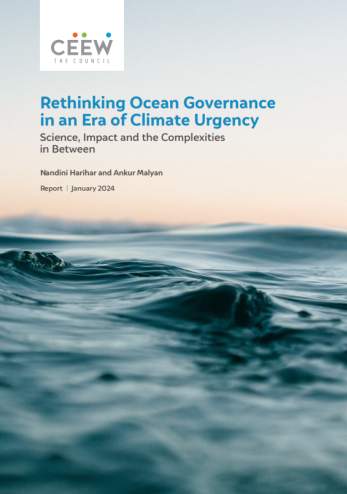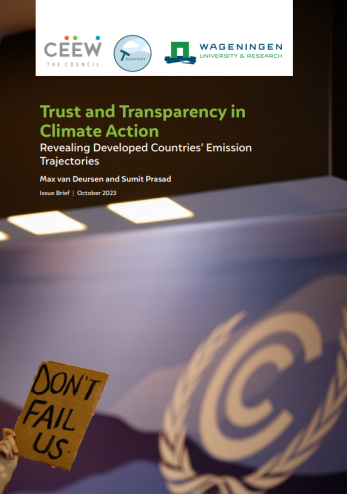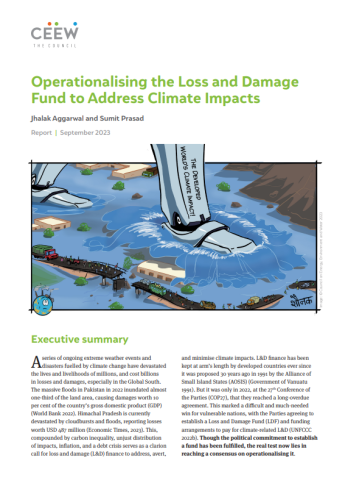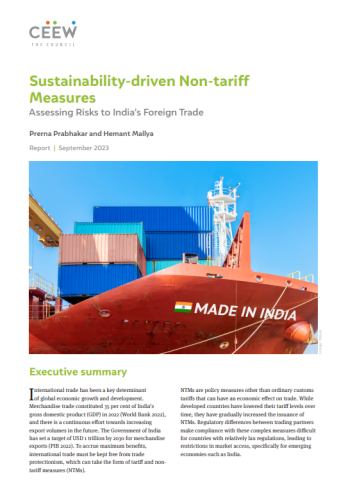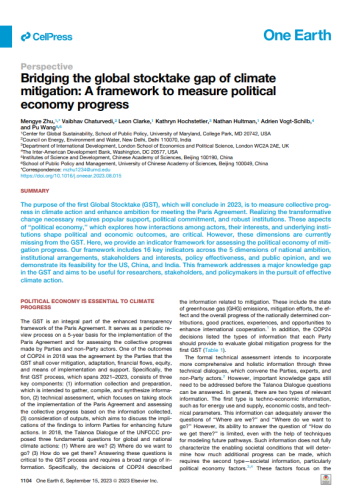Policy Brief
The Myth of Mobilising Private Finance for Climate Action and Pivoting to Scale
Manon Fortemps, Jens Sedemund, Özlem Taskin, Amarendra Bhattacharya, Arjun Dutt, Arunabha Ghosh and Paulo Esteves
May 2023 | International Cooperation, Sustainable Finance
Suggested citation: Fortemps, Manon, Jens Sedemund, Özlem Taskin, Amarendra Bhattacharya, Arjun Dutt, Arunabha Ghosh, and Paulo Esteves. 2023. The Myth of Mobilising Private Finance for Climate Action and Pivoting to Scale. T20 Policy Brief.
Overview
This paper, published by the T20 India Task Force, examines the challenges in mobilising private capital for climate action and proposes solutions to unlock flows at scale. Developing countries need USD one trillion per year in external finance for climate action by 2030. However, both real and perceived risks impede the mobilisation of private climate finance at scale. This policy brief proposes a framework of solutions for the G20 to make blended finance work for climate action and development by undertaking actions in three areas: (i) enabling environments; (ii) instruments; and (iii) institutions.
Key Highlights
- Developing countries should be the focus of the global transition to sustainability. These countries are projected to account for the majority of future global infrastructure investments and more than three-quarters of future greenhouse gas emissions.
- Developing countries will be unable to meet the associated investment requirements from domestic resources and need an estimated USD one trillion per year in external finance for climate action by 2030. In order to mobilise investment at such a scale, there is broad recognition of the need to unlock private finance for investments in developing countries.
- Private capital flows to developing countries have been constrained by both real and perceived risks, which if not managed, will lead to a significant escalation of the cost of capital, further hindering capital flows. Against this backdrop, expectations have been pinned on enhanced mobilisation of private climate finance through the development of finance interventions and instruments, broadly captured under the concept of 'blended finance'.
- Private capital mobilisation by existing blended finance interventions remains limited. Per the OECD, only USD 120.8 billion was mobilised from the private sector by official development finance interventions from 2016 to 2021.
- In this regard, solely a transaction-based approach to private capital mobilisation has inherent limitations. For greater effectiveness, mobilisation needs to be situated in a broader context of support to developing countries — notably the creation of an effective enabling environment, both through regulatory and policy measures as well as enhanced capacities, de-risking instruments, and institutional development.
Recommendations
- Establish country or sector platforms, with a focus on the energy transition, that bring together key stakeholders in support of country-led investment and transition strategies (such as the Just Energy Transition Partnership model). Such partnerships can incentivise a country to set out clear strategies and investment programmes, tackle policy impediments, put in place structures for scaling up project preparation, and create replicable and scalable models of financing.
- Deploy blended finance solutions such as guarantees, insurance, and hedging to mitigate systemic challenges such as exchange rate risks and lower intermediation costs. Potential solutions to improve the strategic use of blended finance include scaling up portfolio approaches in order to aim for both impact and volume. The IFC Managed Co-Lending Portfolio Program (MCPP) and the proposed Global Clean Investment Risk Mitigation Mechanism (GCI-RMM) are examples of replicable structures that adopt a portfolio approach to mobilise new sources of capital for sustainable infrastructure.
- Reform the international development finance system to adopt a stronger focus on mobilising additional private finance. Multilateral development banks remain insufficiently focused on mobilisation and their incentive structures create a risk of ‘crowding out’ private capital instead of driving co-investment and mobilisation of additional private capital. Integrating mobilisation indicators in corporate scorecards and considerations of career advancement paths of individual officers could be key to aligning incentive systems with mobilisation objectives.
- Utilise emerging sustainable finance hubs in large developing economies, such as the Gujarat International Finance Tec-City International Financial Services Centre (GIFT IFSC) in India, to link international capital with investment opportunities in the Global South. Developing such initiatives as conduits of capital to countries beyond their immediate jurisdictions can help bridge the gaps in the financial systems of developing countries. In order to do so, these initiatives should be encouraged to expand their focus beyond vanilla debt and equity to blended finance.
"The mobilisation of the vast amounts of private capital needed for global climate action requires concerted interventions spanning instruments, institutions and enabling environments."




